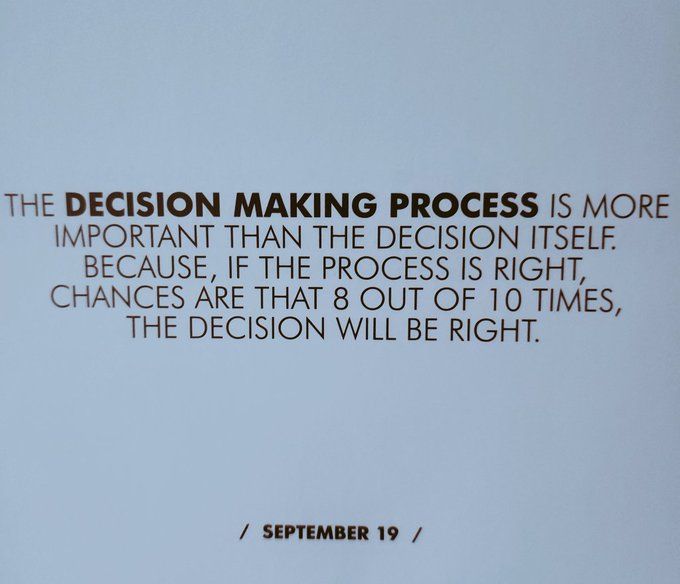
Monday, 30 September 2019
Sunday, 29 September 2019
Wednesday, 25 September 2019
What Are The Best Technical Indicators?
Technical indicators give traders ways to quantify and measure price action. A technical indicator can show the direction of the current trend, volatility, momentum, and whether a market is overbought or oversold. The best use of technical indicators is to use them to create great risk/reward ratios on entry. Technical indicators can also be the primary filters for quantifying entries and exits during system backtesting.
Signals derived from technical indicators can help traders filter out their own opinions and predictions and instead focus on the momentum and trend of price action. These tools help traders develop ways to capture trends in their own trading time frame. The following are the four that I have found to be the best technical indicators for price action trading.
A moving average shows the direction of a market in the time frame that is correlated with the length of the moving average. Markets are in up trends when over and down trends when under a moving average for that time frame. Moving averages are great for quantifying and trading trends but are ineffective during sideways or volatile markets when no trend is established. Moving averages can be combined to create crossover systems that filter out volatility by only triggering entry and exit signals when a short moving average crosses over a longer term moving average. Moving averages are easy to backtest and can be used to create mechanical trading systems. They are also good filters for discretionary trading to establish the current trend.
Chart Courtesy of TrendSpider.com
The Moving Average Convergence Divergence indicator (MACD) is a measure of price momentum. The MACD crossover can signal an intermediate swing trade and also be used as a filter to see the direction of the momentum of a market. The MACD can give a cross over or cross under signal showing a change in market trend and momentum before a moving average crossover system as it reacts faster to a loss of momentum that moving averages in most situations. In very dull markets over long periods of time the MACD can become flat and the lines converge not giving clear signals. The MACD is best used as filter to measure the current momentum of a market direction.
The Average True Range (ATR) can be used in many ways. A declining ATR shows volatility decreasing but an expanding ATR shows volatility increasing. This is a technical indicator to help calibrate position sizing and quantify risk. The ATR can also be used as a trailing stop as it can establish how many ATRs in movement you want to risk against your position on entry after you establish your position sizing.
The Relative Strength Indicator (RSI) is a measure of how far and how fast price action moved in one direction. RSI shows the risk/reward ratio increasing and decreasing as swing or trend direction continues. He high or low RSI reading is a warning that a market moved too far and too fast with no pullback and the risk reward/ratio is starting to skew against a position. The 30 RSI favors long positions and buying the dip in most cases as the market has become oversold and the 70 RSI reading favors selling long positions and locking in profits as the market has become overbought at those levels in the majority of circumstances. When a market has an extended parabolic move in one direction the RSI is not valid, but the majority of the time it indicates short term tops and bottoms even in swinging and trending markets.
There is no magic with technical indicators they are only trading tools and their usefulness is created when you combine them or use them as filters to create your own trading system that fits your risk tolerance levels and return goals. Trading a quantified and winning system with the right risk management and discipline is where the magic happens.
Tuesday, 24 September 2019
Monday, 23 September 2019
Sunday, 22 September 2019
Saturday, 21 September 2019
Friday, 20 September 2019
Thursday, 19 September 2019
Wednesday, 18 September 2019
If this doesn't reverse to 10790-820 , let's see !

If this doesn't reverse to 10790-820 , let's see !
Tuesday, 17 September 2019
BOOKED 7000++
DAY DONE:
BOOKED 7000++ MANY ONE ASKING WHY NOT UPDATING DAILY WITH LOT OF QUESTIONS: SAID TO ALL COME ON TEAM VIEWER I'LL SHOW MY LEDGER !!

BOOKED 7000++ MANY ONE ASKING WHY NOT UPDATING DAILY WITH LOT OF QUESTIONS: SAID TO ALL COME ON TEAM VIEWER I'LL SHOW MY LEDGER !!

Monday, 16 September 2019
Sunday, 15 September 2019
Saturday, 14 September 2019
How to Identify A Trend Reversal In A Stock
This is a list of things to look for as possible signs before a stock makes a top and rolls over. Alone these are just possibilities but the probabilities increase as more of the signs are in place.
- When the RSI gets near 70 on the daily chart for a stock and it becomes overbought resistance, the price momentum to the upside slows, and the the price settles into a trading range.
- A Gravestone Doji is a bearish candlestick that indicates a downside reversal could be about to take place. This candle shows a lack of buyers holding positions at higher prices and profit taking setting in. Price ends up near where it started after higher prices are rejected.
- If the market opens higher but fails to go over the opening price level for the entire trading day, this is a sign that buyers are rejecting higher prices. This is called a hammer or hanging man candlestick.
- The market opens below the previous days trading range and never gets over the previous days low, that is an early sign of a new trading range.
- The market starts to open higher but closes lower, that is a sign of distribution.
- The average daily trading range expands and volatility starts to grow.
- A huge volume day that gaps way up and then sells off into negative territory on high volume.
- A stock is far extended from all moving averages. The odds increase for a reversion to at least the 5 day or 10 day moving average.
- A major “good news” event happens but with little or no price movement higher, and the market is out of catalysts to drive it higher.
- When the majority of people think the stock will not pullback and they are against you short selling the stock.
These are just things to look for that could result in a short term top that lasts weeks or months and maybe nothing more than a pullback or a new range being traded. There are times to buy a breakout and times to wait for a pullback. There is a fine line between chasing the market higher and buying momentum.
Labels:
Guidlines
Subscribe to:
Comments (Atom)






























